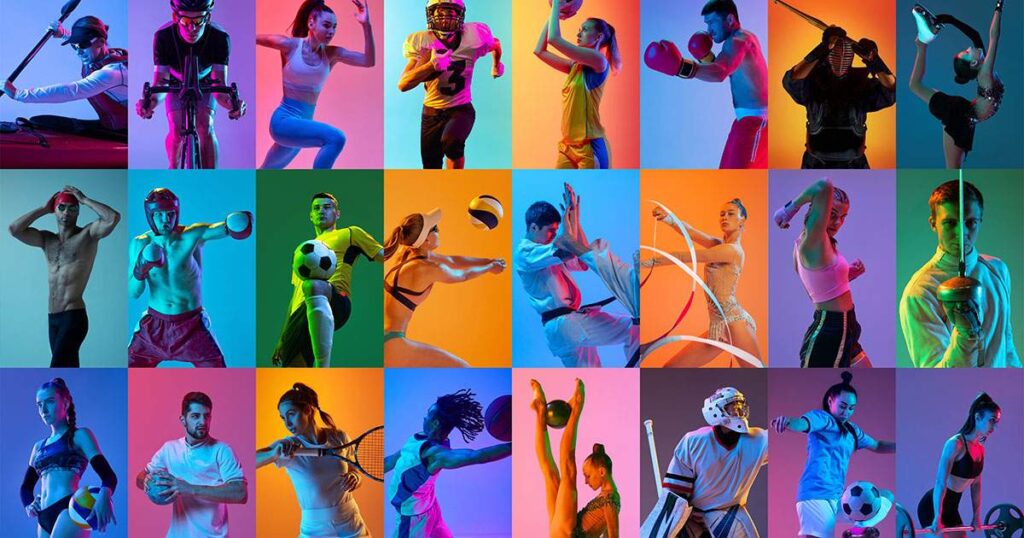Explaining the 9 Types of Works Protected by Japanese Copyright Law with Case Examples

In the sophisticated market of Japan, understanding intellectual property rights is an essential management issue for businesses. While many rights, such as patents and trademarks, require registration, copyright arises automatically with creation. This personalityistic is advantageous from a rights protection perspective, but it also inherently carries the risk of unintentionally infringing on others’ rights if one does not accurately understand what constitutes a ‘work’ eligible for protection. Therefore, from both risk management and intellectual asset protection standpoints, grasping the definition and types of works is of utmost importance. Under Japanese Copyright Law (Article 2, Paragraph 1, Item 1), a work is defined as “something that creatively expresses ideas or emotions and falls within the domains of literature, science, art, or music.” This definition is composed of four elements: ideas or emotions, creativity, expression, and cultural domain. To complement this abstract definition, Japanese Copyright Law provides concrete examples of protected works. This article will provide a detailed explanation of the nine main types of works listed in Article 10, Paragraph 1 of the Japanese Copyright Law, discussing how each is legally interpreted and the potential issues that may arise in actual business scenarios, with reference to significant court cases.
Definition of “Works” Under Japanese Copyright Law
To be protected by copyright, a creation must first meet the definition of a “work” as stipulated in Article 2, Paragraph 1, Item 1 of the Japanese Copyright Law. This definition can be broken down into four essential requirements. Any creation lacking even one of these requirements will not be protected as a work.
Firstly, it must contain “thoughts or feelings.” This means that mere facts or data are excluded from being considered works. For example, the fact that “Tokyo Tower is 333 meters tall” is an objective piece of data that does not involve anyone’s thoughts or feelings and therefore does not qualify as a work.
Secondly, it must be “creatively” expressed. The term “creativity” here does not necessarily imply high artistic value or complete novelty. It is sufficient if some aspect of the author’s personality is reflected in the expression. Therefore, mere imitations of others’ works or commonplace expressions that would result similarly regardless of who expresses them are not recognized as having creativity and do not constitute works.
Thirdly, it must be an “expression.” The Copyright Law protects specific “expressions,” not the underlying “ideas.” This is known as the “idea-expression dichotomy,” a fundamental principle of copyright law. For example, the concept or plot of a novel, which are ideas, are not protected, but the specific text written based on those ideas is protected as an “expression.” This principle also has an economic policy aspect that promotes healthy competition and cultural development. If ideas themselves were monopolized, it would prevent others from creating superior works on the same theme, potentially hindering innovation. The law ensures a breeding ground for diverse expressions by leaving ideas in the public domain. A company’s competitive advantage is also built on the quality of specific and legally protected “expressions,” such as software code, brand design, and manual descriptions, rather than abstract business concepts.
Fourthly, it must belong to the domain of “literature, academia, art, or music.” This requirement limits the scope of protection to cultural creative activities and excludes purely industrial products from the ambit of copyright law. Industrial designs are primarily protected under other intellectual property laws, such as design law.
Exemplary Types of Works Under Japanese Copyright Law
Article 10, Paragraph 1 of the Japanese Copyright Law lists nine specific types of works as concrete examples that fall under the aforementioned definition. While these are merely illustrative and works not included in this list can still be protected if they meet the definition of a work, understanding these categories is extremely beneficial in practice.
Literary Works Under Japanese Copyright Law
Literary works as defined by Article 10, Paragraph 1, Item 1 of the Japanese Copyright Law include a wide range of creative works expressed through language, such as novels, scripts, essays, lectures, and even the text and advertising copy posted on a company’s website. However, Paragraph 2 of the same article clarifies that “mere news reporting and current event reporting that only transmit facts” do not fall under the category of literary works. This provision reaffirms the basic definition of a work, which is that mere reporting of facts does not possess the originality required for copyright protection.
A significant criterion in this field was established by the Supreme Court’s decision on June 28, 2001 (2001), commonly known as the “Esashi Oiwake Incident.” The case contested the similarity between the prologue of a book and the narration about the town of Esashi in Hokkaido broadcasted on a television program. The court ruled that for an adaptation of a literary work (the creation of a new work based on an existing one) to be established, the “essential personalityistics of the expression” of the original work must be maintained, and those encountering the new work must be able to “directly perceive” those of the original. What both works had in common was the historical fact that the town of Esashi once prospered from herring fishing and the recognition that the town becomes most lively during the Esashi Oiwake National Competition. The court deemed these as unprotected ideas or common facts and, since the specific expressions of the text were different, did not recognize copyright infringement.
This precedent is an important guideline for corporate activities. Creating a new report with your own analysis and views based on the same factual information and data as a report published by a competitor does not constitute copyright infringement, as long as the expression itself is not imitated. The principle that copyright law protects the specific ‘expression’ and not the underlying ‘facts’ or ‘ideas’ serves as the foundation for free competition and the circulation of information.
Japanese Musical Works and Copyright
Musical works under Japanese copyright law (Article 10, Paragraph 1, Item 2 of the Japanese Copyright Act) refer to the music itself (the combination of melody, harmony, and rhythm). Additionally, lyrics accompanying the music are also protected independently as literary works.
A recent significant decision regarding the use of music is the Supreme Court ruling on October 24, 2022 (2022), commonly known as the “Music School Case.” This case contested who is obligated to pay copyright fees for the performance of musical works during lessons at a music school. The Supreme Court determined that performances by teachers are intended for the “public,” in this case, the students, and are conducted under the management of the music school operators; therefore, the operators are the main infringers of copyright. On the other hand, performances by students, aimed at improving their own skills and not as strongly under the control and management of the operators as the teachers’ performances, led to the conclusion that the operators are not the primary users.
This judgment suggests that not only the physical performer but also those who “control and manage” the act as a business and profit from it can be considered the legal users. The concept of “control and management” is crucial not only for music schools but also for services such as karaoke establishments and platform businesses where customers upload content, as it is an important factor in determining the extent of copyright responsibility that operators bear.
Choreographic and Pantomime Works Under Japanese Copyright Law
Choreographic and pantomime works (as per Article 10, Paragraph 1, Item 3 of the Japanese Copyright Law) are protected as they express ideas and emotions through bodily movements, such as the choreography of ballet, Japanese traditional dance, and other dance forms.
An example where the nature of such works was recognized is the Osaka District Court’s decision on September 20, 2018 (2018), commonly referred to as the “Hula Dance Choreography Lawsuit.” In this case, the issue was whether specific choreography of a hula dance could be protected as a copyrighted work. The court distinguished between traditional and fundamental steps of hula dance that have been passed down through generations (the realm of ideas and facts) and the parts where the choreographer had selected and arranged these steps in an original way to create a new expression (the protected expression). The court affirmed the latter as having creativity and thus recognized it as a copyrighted work.
This precedent indicates that even intangible and transient performances like dance can be subject to copyright protection if they are fixed in a form that can be identified and reproduced, whether through video, notation, or consistent instruction. This holds significant implications for companies that commission or use original choreography for advertising campaigns, events, or entertainment performances. The choreography created can become a valuable intellectual property for the company, making it essential to clearly define the scope of use and the attribution of rights in contracts with choreographers.
Artistic Works Under Japanese Copyright Law
Artistic works as defined by Article 10, Paragraph 1, Item 4 of the Japanese Copyright Law include paintings, prints, sculptures, and manga, among others. Legal discussions in this field particularly focus on the protection of “applied art,” that is, when artistic creations are applied to utilitarian objects.
A leading case on this issue is the Intellectual Property High Court’s decision on April 14, 2015 (2015), known as the “TRIPP TRAPP case.” The case contested whether the design of an original children’s chair could be protected as a copyright work. The court indicated that the design of the chair, transcending mere functional form, could be appreciated aesthetically separate from its practical function and thus could qualify as an artistic work. Although copyright infringement was ultimately denied due to a lack of essential similarity in expressive features with competing products, the decision was groundbreaking in acknowledging the potential for copyright protection of the design of a practical industrial product like a chair.
This precedent suggests that a single product design can be protected in a layered manner by multiple intellectual property laws, including design law, trademark law (three-dimensional trademarks), the Unfair Competition Prevention Act, and copyright law. Compared to the relatively short protection period of design rights, copyright persists for a long period of 70 years after the author’s death. Therefore, it is advisable for companies to not only register their key product designs but also to consider whether they possess sufficient artistic creativity to be protected under copyright law, and to develop a multifaceted intellectual property strategy accordingly.
Architectural Works Under Japanese Copyright Law
The scope of protection for architectural works (Article 10, Paragraph 1, Item 5 of the Japanese Copyright Law) is interpreted very narrowly in Japan. General residential houses and office buildings, even if they are excellently designed, are usually not considered architectural works under copyright.
The stringent standard was established by the Osaka District Court’s decision on October 30, 2003 (2003), commonly known as the “Sekisui House case.” A major housing manufacturer sued a competitor for copying the design of its model houses, but the court rejected the claim. The court stated that for an architectural work to be protected as a copyright, it must possess a high level of artistic quality that goes beyond mere aesthetic consideration and expresses the cultural and spiritual thoughts or emotions of the designer, qualifying as “architectural art.”
The reason for setting such a high bar is that easily granting copyright protection to designs related to the basic functions or structures of buildings could allow for monopolization by certain entities, potentially hindering healthy competition and development in the construction industry. Buildings are essentially practical in nature, and the law prioritizes the interests of society as a whole over the protection of individual creativity. Therefore, businesses in the construction and real estate industries must recognize that the likelihood of their architectural designs being protected by copyright is extremely low, and they should secure competitive advantages through other factors such as brand value and service quality.
Graphical Works Under Japanese Copyright Law
Graphical works as defined by Article 10, Paragraph 1, Item 6 of the Japanese Copyright Law include maps, academic drawings, diagrams, models, and architectural plans. The creativity in these works is not found in the objective information they depict, but in how that information is selected, arranged, and expressed graphically.
Architectural plans are a prime example in this category. As mentioned earlier, while the building constructed based on these plans is rarely protected as an ‘architectural work,’ the plans themselves may be protected as ‘graphical works.’ This is because the designer utilizes their specialized knowledge and skills to create a unique expression in determining the structure and layout of the building.
This legal structure holds significant importance in the relationship between architects and clients, such as developers. The copyright of the architectural plans created by an architect generally belongs to the architect. Therefore, if a client reproduces these plans without permission to construct another building, or passes them to another architect for modification, it could constitute an infringement of copyright of the graphical works. To avoid this, it is crucial in architectural design service contracts for the client to secure the necessary licenses (usage permissions) to use the plans for construction, future renovations, maintenance, and other purposes.
Cinematic Works Under Japanese Copyright Law
Cinematic works, as defined by Article 10, Paragraph 1, Item 7 of the Japanese Copyright Law, are broadly defined under Article 2, Paragraph 3 of the same law. Not only theatrical films but also any works “expressed in a manner that produces visual or audiovisual effects similar to those of movies and that are fixed onto a medium” are included. This encompasses television programs, commercial films, and even video games as cinematic works.
The first instance where a video game was deemed a cinematic work was in the Tokyo District Court’s decision on September 28, 1984 (1984), known as the “Pac-Man Case.” The case contested whether the act of installing unauthorized copies of the “Pac-Man” game machines in a game center constituted a copyright (right of public performance) infringement. The court determined that the series of images recorded (fixed) on the game’s ROM, although changing in response to the player’s actions, constituted a creative audiovisual expression as a whole and thus fell under the category of cinematic works.
This judgment significantly impacted the subsequent development of Japan’s video game industry. By classifying games as cinematic works, game creators were able to enjoy the same robust rights (such as the right of public performance and distribution rights) as movie producers. Furthermore, according to the provisions of Article 29 of the Japanese Copyright Law, the copyright of cinematic works generally belongs to the film producer (game company), which has simplified the rights management in the complex game development process involving many creators. This has provided a stable legal foundation for Japan’s game industry to gain global competitiveness.
Photographic Works Under Japanese Copyright Law
Photographic works (as defined in Article 10, Paragraph 1, Item 8 of the Japanese Copyright Law) are protected by copyright law. While the threshold for creativity required for photographs to be recognized as copyrightable is relatively low, a certain level of creative effort is still necessary.
The standard for the copyrightability of photographs was established by the Tokyo High Court’s decision on June 21, 2001 (2001), commonly referred to as the “Fresh Watermelon Photo Case.” The court held that the creativity in photographs arises from a combination of various choices and ingenuity by the photographer, such as the selection of the subject, composition, control of light and shadow, angle, timing of the shutter, and development techniques. This judgment has led to a broad interpretation that most photographs, except for mere mechanical reproductions, are protected as copyright works if the photographer’s intention is involved.
This extensive protection underscores the necessity of rigorous risk management for companies. In today’s world, where images can be easily obtained on the internet, it is easy to forget that these images may be someone’s copyrighted work. However, the unauthorized use of photographs taken by others on a company’s website, social media, or in advertising materials can constitute copyright infringement, potentially leading to claims for damages. Therefore, it is essential for companies to establish strict internal management systems, such as concluding license agreements, verifying rights, and retaining evidence of permission for all images they use. The assumption should be that all photographs are, in principle, someone’s copyrighted work.
Computer Program Copyrights Under Japanese Law
Computer program copyrights, as defined in Article 10, Paragraph 1, Item 9 of the Japanese Copyright Law, refer to computer programs. What is critically important here is the provision of Article 10, Paragraph 3 of the same law. According to this provision, copyright protection extends to the specific “expression” (the writing of the source code) of a program, but not to the underlying “programming language,” the “protocols” (communication procedures), or the “solutions” (algorithms) which are the processing procedures. This applies the idea-expression dichotomy to the realm of programming.
A recent case that illustrates practical issues in this field is the judgment by the Osaka District Court on January 29, 2024 (Reiwa 6). In this case, a dispute arose over a company that had outsourced the development of a program and then replicated and modified it for use at multiple sites. The court first affirmed the copyrightability of the program’s source code, noting that despite functional constraints, there was “a reasonable range of choice” in its writing, and the volume of the description (approximately 120 pages in A4 size) demonstrated the developer’s individuality. However, the court rejected the claim of copyright infringement. The reason for this was that, based on the long-standing business relationship between the parties, the fact that the developer had delivered the source code, and the understanding that the client would use the program at multiple sites, the court found that there was an “implied license” for the client to replicate and modify the program for internal use.
This judgment contains important lessons for business managers who outsource software development. The attribution of software copyright and the scope of its licensing are entirely separate issues. Relying on trade practices or tacit understanding can lead to potential disputes in the future. In outsourced development contracts, it is essential from a risk management perspective to clearly and specifically define in the contract who can use the program, at how many locations or on how many devices, whether modifications are permitted, and what rights there are to access the source code.
Comparing the Criteria for Creativity in Various Works Under Japanese Copyright Law
As we have seen, the requirement of ‘creativity’ under Japanese Copyright Law is not uniformly applied to all works. Courts in Japan interpret this standard flexibly, depending on the nature of the work. In particular, for works with high practical utility, such as architectural works, the threshold for creativity is set very high to avoid unduly restricting industrial activities. Conversely, for works whose purpose is expression itself, such as photographs, creativity is often recognized at a relatively lower standard. Understanding these differences in criteria can be helpful in determining which of your company’s intellectual assets may receive robust copyright protection. The table below compares the key points of the criteria for creativity, particularly for major types of works where the standards diverge.
| Type of Work | Key Points for Creativity Assessment | Relevant Case Law |
| Architectural Works | Must possess a high degree of artistic quality and be evaluated as ‘architectural art’ | Secom Home Life Co. case |
| Artistic Works (Applied Art) | Whether it can be appreciated aesthetically beyond its practical purpose | TRIPP TRAPP case |
| Literary Works | Whether the author’s personality is reflected in the essential personalityistics of the expression | Esashi Oiwake case |
| Photographic Works | Whether there is ingenuity in the selection of the subject, composition, lighting, and shading | Fresh Watermelon Photograph case |
| Computer Program Works | Whether there are alternative choices in expression and the author’s personality is demonstrated | Osaka District Court, January 29, 2024 (2024) decision |
Summary
The Japanese Copyright Law protects a wide range of creative expressions, from language and music to art and programming. However, the abstract definitions and examples provided by the legal text alone make it challenging to determine whether a specific creation is protected. As we have overviewed in this article, the scope of protection for individual works has been concretely shaped by precedents set by courts over the years. These precedents provide essential guidance for interpreting and applying the concept of ‘creativity’ in the law, tailored to the personalityistics of each field. Therefore, to properly assess copyright issues, not only knowledge of the statutes is required but also a deep understanding of these judicial decisions is indispensable. Monolith Law Office has a wealth of experience advising on legal issues related to the types of works discussed in this article for numerous clients within Japan. Our firm includes several English speakers, some with foreign legal qualifications, enabling us to provide specialized and seamless support to international companies facing the complexities of Japanese intellectual property law.
Category: General Corporate





















